
October 23, 2008

Weeki Wachee Springs, above, 1940s.
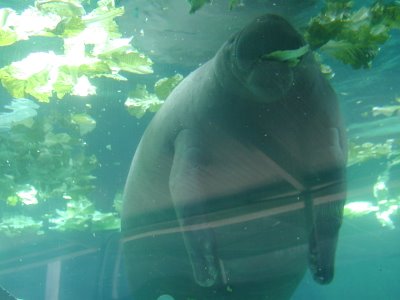
Homosassa Springs, above, 2008.
I’ve just returned from three great days in Florida, cryptozoologically having the time of my life.
A good chuck of my time was spent at Homosassa Springs State Park, which is a wildlife park purchased by the State of Florida when it fell on hard economic times. It has one of the only, if not the only legally captive populations of manatees around, kept in a natural springs with fish that come and go from the Gulf of Mexico, as well as birds and reptiles who come into and out of the manatee springs. The six female manatee there share their spring-filled part of the world with a dozen or so alligators, for instance.
I was there with a Canadian HD digital crew (Graeme Ball, Chris Romeike, Peter Sawade, Adam Makarenko, Karen Hawkes, & Rebecca Snowe) shooting an Animal Planet documentary to be broadcast in Spring 2009, tentatively entitled “Beasts of the Bible.”
I was taped discussing Mermaids while I was wading in the water, feeding sweet potatoes and romaine lettuce to the rather large manatees. They were some pushy ladies, splashing their snouts in the water, getting my shirt and shorts totally soaked before the hour or so session was over. At one point, Chris’ camera got quite a splashing too. (Park rangers Ashley Hironymus, who was there feeding the manatees in the water with me, and J. D., are to be thanked for their valuable assistance.)
Although the crew and I worked very hard (not getting done until 10:30 pm that night), I had a great time. I look forward to the footage taken myself, because I was so busy dealing with the critters and thinking about safety, feeling the scratching whiskers and good-sized teeth on my hands while I was talking about Mermaids, I may have missed out on some of the overall visuals, as several thousand pounds of manatee pushed against my body.
It was a wonderful experience, of course, and even though the ancient mariners might not have thought these manatees were mermaids, they were quite beautiful animals to me.
Below are various images I’ve gathered from the net to attempt to share some of the scenes I experienced with the manatees.

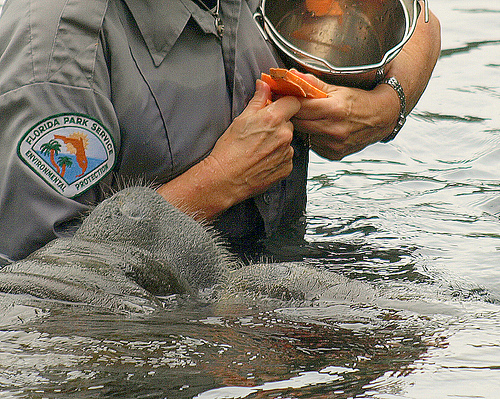
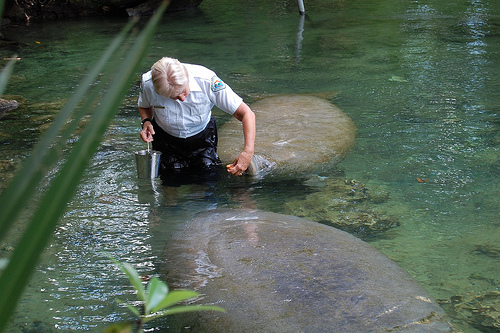
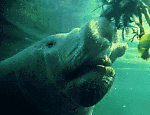
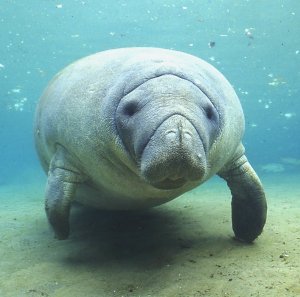
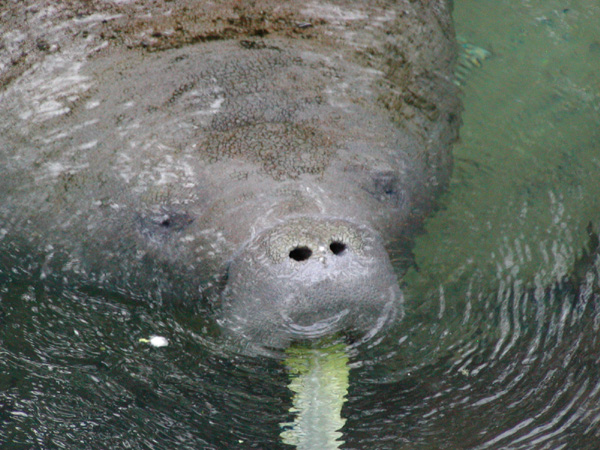

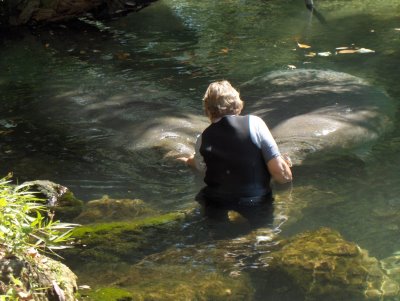
Besides the outside shooting, some of it occurred in front of the floating observation deck’s underwater windows, which give good closeups of the manatees during specific feeding times.
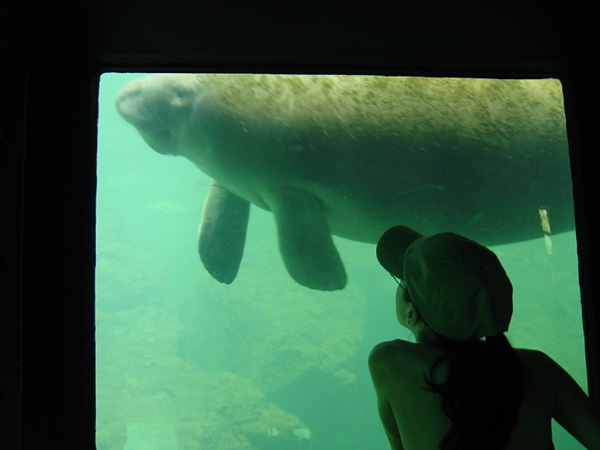
In addition to the manatees swimming there, Animal Planet had a real Mermaid (below) from Weeki Wachee Springs swimming with the manatee, as I was being interviewed in front of the whole scene. It was actually very breathtaking.
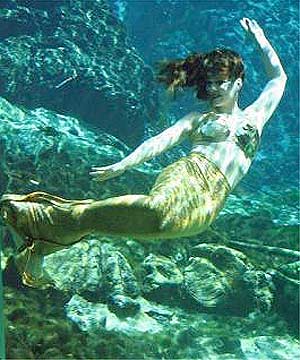
Certainly, the Sirenia are an interesting group of animals. The fact is that they are involved in several separate areas of cryptozoological pursuits: (1) Steller’s Sea Cow are a cryptid of interest in the Northern Pacific, (2) some South America specimens have been confused with Lake Monsters, (3) one unknown cryptid of Oceania, the Ri, turned out to be a dugong, (4) manatees may have been the source of New World Merbeing reports, and (5) out-of-place reports of manatees in, for example, Texas, Massachusetts, New York, and Virginia. Additionally, (5) the discovery of a new species, the dwarf Amazon manatee is a cause for celebration.
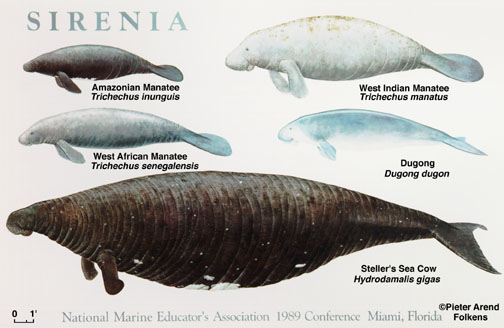
In addition to the manatees, the state park houses many animals, including bobcats, cougars, otters, alligators, and several specimens of other mammal, reptile and bird species. It also is the home of a lone retired actor, Lu (short for Lucifer, which is not publicly used any longer).
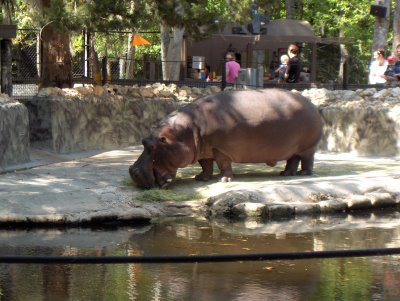
Lu is an African Hippopotamus, who was born at the San Diego Zoo on January 26, 1960. He weighed 90 pounds at birth and now weighs more than 6,000 pounds. A vegetarian, Lu consumes 15 pounds of alfalfa hay, four scoops of herbivore diet and a five gallon bucket of vegetables and fruit every day.

A fixture at Homosassa Springs since 1964, Lu was a movie and television star with the Ivan Tors Animal Actors troupe, which wintered at the park while in private ownership. His credits include the 1960s movies Daktari and Cowboy in Africa.
For years, Lu had a donkey, Susie, as a companion. Lu’s buddy the donkey died, and the wildlife park folks tried to replace the loss with another donkey. Lu killed the new donkey and ended up killing every non-human animal placed with him.
Fifteen years ago, when the park became part of the state park system and the emphasis turned from exotic animals to native Florida wildlife, Linley and others began looking for a new home for Lucifer. When the public learned of the plan to move their beloved hippo, they protested. Then-governor Lawton Chiles named the animal an honorary citizen in 1991 so Lucifer could stay.

While the old Homosassa Springs Wildlife Park is a thing of the past, the new Homosassa Springs State Park has become quite a draw. All kinds of people drop by now to talk to the rangers about natural history. My day there was topped off by an amazing coincidence when a woman turned up at the Nature Center (thank you information officer Susan Lowe), asking about her 1970s track casts of a Skunk Ape. Little did she know that a cryptozoologist was in the house, even if I hadn’t stayed at Holiday Express the night before. I chatted with her for some time, and was able to interview her about her own personal Skunk Ape sighting and examine her casts. More about that later….
The crew and I then went off to find a jungle, and to talk about Mokele-Mbembe.
About Loren Coleman
Loren Coleman is one of the world’s leading cryptozoologists, some say “the” leading living cryptozoologist. Certainly, he is acknowledged as the current living American researcher and writer who has most popularized cryptozoology in the late 20th and early 21st centuries.
Starting his fieldwork and investigations in 1960, after traveling and trekking extensively in pursuit of cryptozoological mysteries, Coleman began writing to share his experiences in 1969. An honorary member of Ivan T. Sanderson’s Society for the Investigation of the Unexplained in the 1970s, Coleman has been bestowed with similar honorary memberships of the North Idaho College Cryptozoology Club in 1983, and in subsequent years, that of the British Columbia Scientific Cryptozoology Club, CryptoSafari International, and other international organizations. He was also a Life Member and Benefactor of the International Society of Cryptozoology (now-defunct).
Loren Coleman’s daily blog, as a member of the Cryptomundo Team, served as an ongoing avenue of communication for the ever-growing body of cryptozoo news from 2005 through 2013. He returned as an infrequent contributor beginning Halloween week of 2015.
Coleman is the founder in 2003, and current director of the International Cryptozoology Museum in Portland, Maine.
Filed under Cryptomundo Exclusive, Cryptotourism, CryptoZoo News, Cryptozoologists, Cryptozoology, Expedition Reports, Lake Monsters, Living Dinosaurs, Media Appearances, Men in Cryptozoology, Merbeings, Mokele-Mbembe, Photos, Pop Culture, Skunk Apes, Television